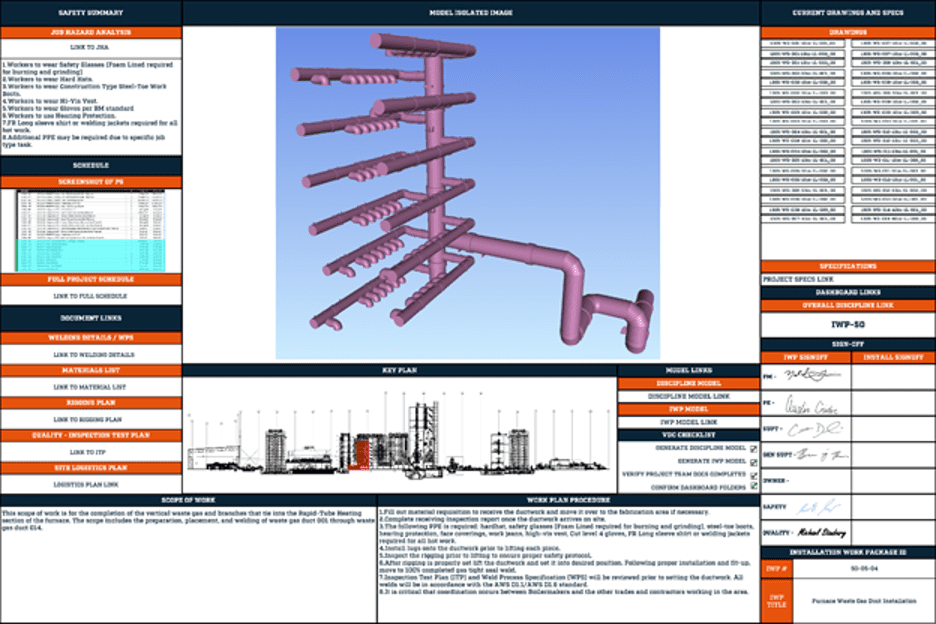Part of any continuous improvement journey involves assessing the various synergies of an organization’s teams, and seeing where it makes sense to share resources to streamline efficiencies. At Barton Malow, our VDC and Quality teams have begun working together, and by sharing resources have been able to accomplish their respective goals faster and more easily than before.
With the launch of Barton Malow’s Quality Improvement Platform (QIP) last summer and a Construction Quality Standard Practice now in effect, there’s no secret that quality is huge focal point for continuous improvement. Barton Malow’s VDC realizes this, and we also realize the value of partnering with the Construction Quality team to together utilize the tools available to meet both of our respective objectives.
Installation Work Packages (IWPs) are now utilized on a number of projects and contain specific areas to house information, one of those being tied to Construction Quality. Here, VDC documents site-specific Construction Quality Manuals, Inspection Test Plans, and specific forms required for proper documentation. One of the best things about using IWPs is that they can be tied directly to turnover. By establishing IWPs before work begins, the turnover scope boundaries are defined and the expected output turnover documentation is easily communicated and achieved.
As mentioned in the previous VDC articles, safety forms have all been migrated into BIM 360. Construction Quality is not far behind, as we are now focusing on getting all Construction Quality forms and templates into BIM 360, the project management solution we’ve invested in to streamline operations from pursuit to closeout. VDC helps host a monthly BIM 360 user group where team members are invited to participate in discussions surrounding the latest features and functionality within BIM 360, and collaborate on the development of new workflows, standard practices, and documentation for company-wide BIM 360 usage. With the right people involved, this process of converting templates has been efficient.
One great example is how the Civil forms have been processed and ultimately input into BIM 360 for all field teams to use. The standard Excel version of the Civil forms “live” in the Civil construction Quality Handbook and are relatively new, as Construction Quality is just gaining traction. These forms landed in the hands of new VDC team member who had recently transitioned to VDC from a Civil Superintendent position. With this team member able to review the forms and provide feedback, we easily captured the quality information needed while not being overbearing and unrealistic. This end product was saved in the Excel version and translated into the BIM 360 versions that are available now for project teams.
